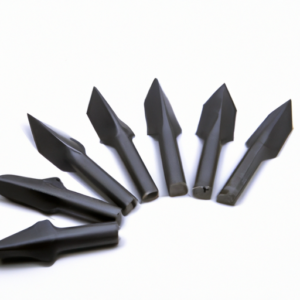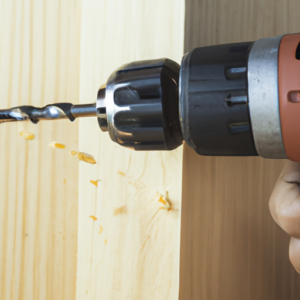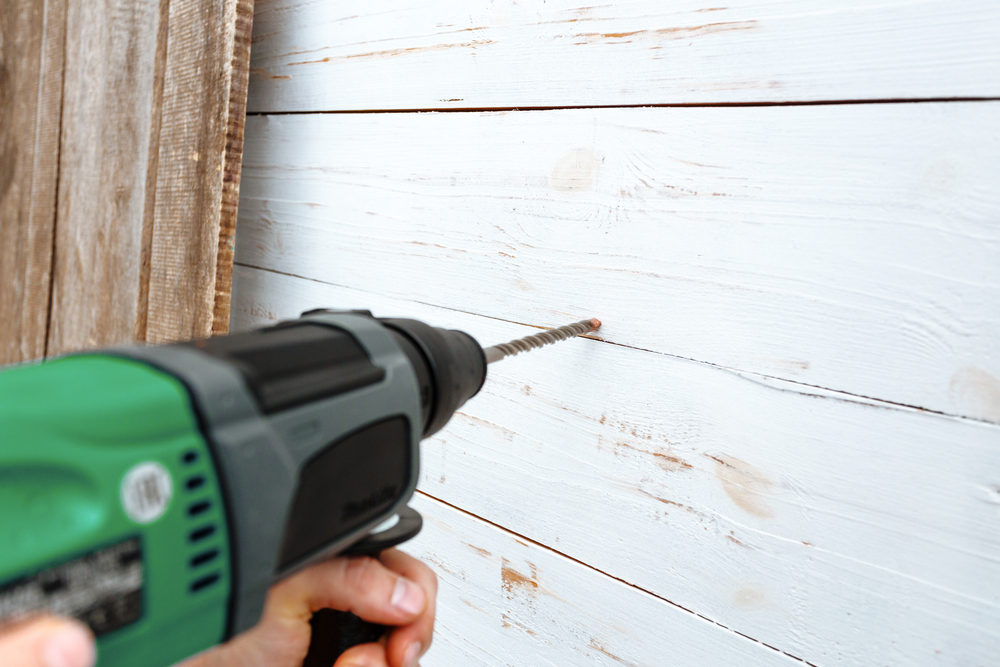Last Updated on January 30, 2023
Can hammer drills be used for wood? It’s a common question among DIYers and professional contractors alike, but the answer isn’t always as straightforward as it may seem. Hammer drills are powerful tools designed to handle tough jobs, so can they really be used on something as delicate and pliable as wood? The truth is that with the right technique and equipment, you can use your hammer drill to tackle even the most challenging projects involving wooden surfaces – from furniture repair to building decks. In this blog post, we’ll explore how you can get started using your hammer drill for woodworking tasks safely and efficiently. Read on for tips about choosing the best bits, mastering drilling techniques, and keeping your tool in tip-top shape.
Table of Contents:
- Hammer Drills and Wood
- Hammer Drill Bits for Wood
- Hammer Drill Techniques for Wood
- FAQs in Relation to Can Hammer Drills Be Used for Wood
- Conclusion
Hammer Drills and Wood
A hammer drill is a tool used to make holes in hard materials, such as wood. It works by using an electric motor to drive a rotating bit that has two parts: the tip and the shank. The tip of the bit is designed to cut into the material, while the shank helps keep it steady and secure. When combined with pressure from your hand or arm, this creates enough force for drilling through tough surfaces like wood.
Hammer drills are ideal for making precise holes in wooden surfaces because they can penetrate even dense wood without damaging them too much. They’re also great for creating large holes quickly since their high-speed rotation makes short work of most tasks.
Hammer Drill Bits for Wood
When it comes to hammer drills and wood, the right drill bit can make all the difference. Hammer drills are incredibly powerful tools that allow you to quickly bore holes into various materials, including wood. However, if you don’t use the right type of drill bit for your project, you could end up with unsatisfactory results or even damage your material.
Spade Bits

Spade bits are great for creating large-diameter holes in soft woods such as pine or cedar without splintering the edges too much. They can also be used on harder woods, but they will take longer to complete each hole due to their flat design, which doesn’t provide enough torque for faster drilling speeds when working with denser materials like oak or walnut.
Auger Bits
Auger bits are best suited for boring deep holes into hardwoods like oak or walnut because their curved cutting edge provides more torque than spade bits do when working with these denser materials; this helps reduce friction so they can work faster while still producing clean cuts every time. The downside is that they tend to leave larger chips behind compared to spade bits, so extra care should be taken when using them on softer woods where splintering could occur more easily if not done properly
Hammer drill bits for wood are an effective and efficient way to complete projects around the home. With a few simple techniques, you can master using hammer drills on wood – let’s take a look at some of these in the next section.
Hammer Drill Techniques for Wood
Drilling into wood with a hammer drill can be tricky, but it doesn’t have to be. With the right techniques and tools, you can make sure your project is successful every time.
Pre-drilling Pilot Holes
When drilling into wood with a hammer drill, pre-drilling pilot holes is essential for accuracy and preventing splintering or cracking of the wood. The size of the pilot hole should match that of the bit you plan on using for your final hole. This will help guide the bit as it drills through so that you don’t end up off-centre or crooked when finished.
Using Slow Speeds

Once you’ve pre-drilled your pilot hole, it’s important to use slow speeds when drilling into wood with a hammer drill. A slower speed helps ensure that all bits are able to penetrate without splitting or cracking any fibres in the wood material itself. Additionally, using lower speeds allows more control over how deep each bit goes before needing to switch out for another one – this helps prevent over drilling, which could damage both materials and tools alike.
Choosing Bits Wisely
The type of bit used also plays an important role in successful drilling into wood with a hammer drill; choose wisely based on what kind of material needs to be drilled through (hardwood vs softwood). For example, if working on hardwoods like oak or maple, opt for carbide-tipped masonry bits as they offer superior cutting power compared to regular steel ones – plus, they last longer too. On softer woods such as pine or cedar, however standard steel bits should suffice just fine since these types won’t require quite as much force from the tool itself during operation.
Maintenance Matters too
Finally, proper maintenance is key when working with any power tool – especially those involving high levels of vibration like hammer drills do. Make sure all parts are properly lubricated after each use and inspect them regularly for signs of wear and tear; replacing worn-out components promptly will help keep your equipment running smoothly while ensuring maximum safety at all times.
FAQs in Relation to Can Hammer Drills Be Used for Wood
What type of drill is used for wood?
Drilling into wood requires a drill with a twist bit, also known as a spade bit. These bits have wide blades that are designed to cut through the grain of the wood and create clean holes. It is important to use the correct size bit for your project, as too small of a bit can cause splintering or breakage, while too large of a bit can cause excessive wear on the material being drilled. Additionally, it is important to ensure that you use an appropriate speed setting for your drill when drilling into the wood; higher speeds may cause burning or melting in softer woods.
What materials can a hammer drill be used for?
A hammer drill is a versatile tool that can be used for a variety of tasks. It is most commonly used to drill into hard materials such as concrete, brick, and stone. The hammering action helps the bit penetrate these tough surfaces more easily than with just a regular drill. Hammer drills are also useful for chiselling away at the material or breaking up tiles. They can even be used to drive screws into masonry and other hard surfaces when fitted with the appropriate bits. With its powerful motor and range of attachments, a hammer drill is an essential tool in any home improvement project involving masonry work or construction.
Can a hammer drill be used as a regular drill?
Yes, a hammer drill can be used as a regular drill. Hammer drills are designed to provide extra power for drilling into hard materials like masonry and concrete. However, they can also be used on softer materials such as wood or plastic with the right bit and settings. When using a hammer drill in regular drilling mode, it is important to make sure that the hammer setting is turned off so that only rotational force is applied to the material being drilled. This will ensure you get an accurate hole without damaging your workpiece or tool.
Conclusion
In conclusion, hammer drills can be used for wood with the right drill bits and techniques. However, it is important to remember that hammer drills are powerful tools and require proper maintenance in order to ensure they last long enough to tackle all of your woodworking projects. With the right knowledge and care, you can use a hammer drill on wood safely and effectively – so don’t let anyone tell you otherwise.
Paul is the type of person who never met a problem he couldn’t fix. He can always be found tinkering with something in his house, even if it isn’t broken! His tips and tricks are often shared on our site. He’s the one you call when something breaks because he has been known to improvise fixes for everything from leaky faucets to malfunctioning dryers.

